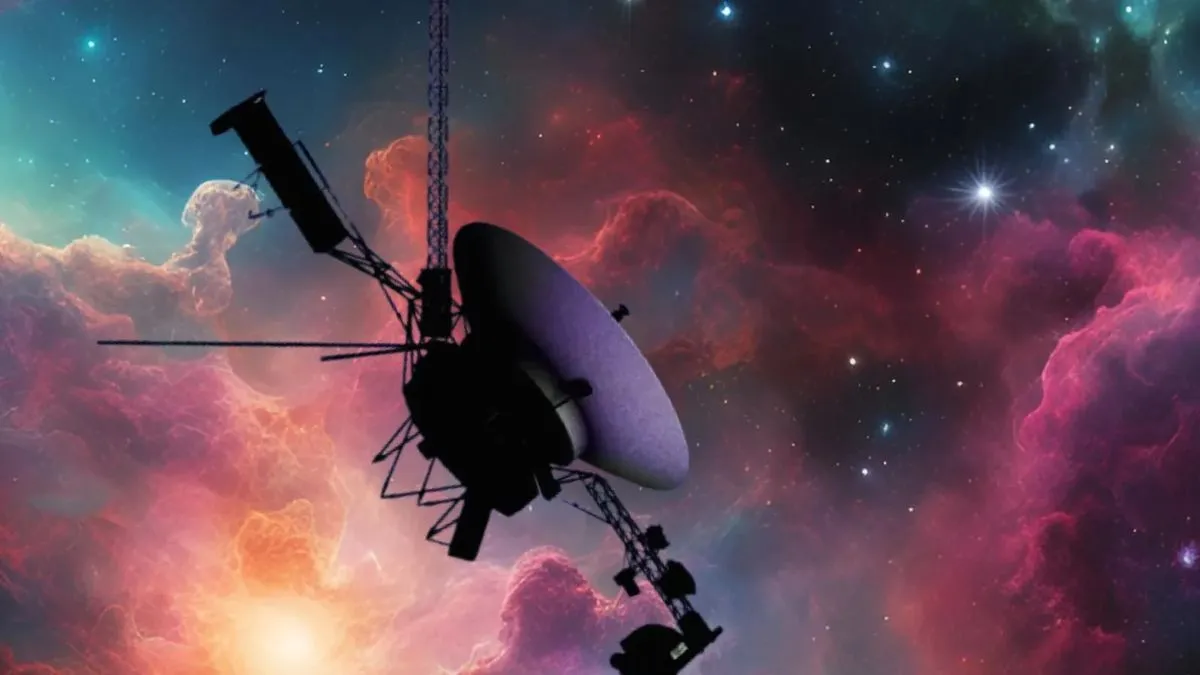
Nasa engineers are taking proactive steps to ensure that the twin spacecraft, Voyager 1 and Voyager 2, can continue their remarkable journey through interstellar space. To conserve energy for future explorations beyond the solar system, mission engineers at NASA’s Jet Propulsion Laboratory (JPL) have turned off certain instruments aboard these legendary spacecraft. On February 25, Voyager 1's cosmic ray subsystem experiment was deactivated, and on March 24, the low-energy charged particle instrument on Voyager 2 will be shut down.
Launched in 1977, Voyager 1 and Voyager 2 carry a suite of ten scientific instruments, both of which successfully reached interstellar space—Voyager 1 in 2012 and Voyager 2 in 2018. These spacecraft have traveled an astounding combined distance of 29 billion miles, making them the farthest human-made objects from Earth. The longevity of their missions is a testament to the innovative engineering behind the Voyagers, but as power supplies dwindle, difficult decisions must be made.
According to Suzanne Dodd, the Voyager project manager at JPL, "The Voyagers have been deep space rock stars since launch, and we want to keep it that way as long as possible." However, she acknowledged the reality of low electrical power. Without these recent instrument shutdowns, Dodd noted that the spacecraft would likely only have a few more months of operational time.
Both Voyager spacecraft utilize a radioisotopic power system, generating electricity from the heat emitted by the decay of a radioactive isotope of plutonium. This system loses approximately 4 watts of power each year. In the 1980s, after completing their investigations of the solar system's giant planets, several instruments were turned off to extend the lifespan of both probes. For instance, in October 2024, Voyager 2's plasma science experiment was shut down, which had measured plasma flow past the spacecraft.
Voyager 1's plasma science instrument had already ceased functioning correctly in 1980 and was turned off in 2007 to conserve power. Most recently, the cosmic ray subsystem aboard Voyager 1 was deactivated, which had played a crucial role in confirming that Voyager 1 had exited the heliosphere, the sun's sphere of influence at the edge of the solar system.
Similarly, the low-energy charged particle instrument on Voyager 2, scheduled for shutdown at the end of March, measures various ions, electrons, and cosmic rays. This data is essential, as it provides insights into particles originating from both the solar system and our galaxy.
Patrick Koehn, a Voyager program scientist, emphasized that the Voyager spacecraft have far exceeded their original mission objectives of studying the outer planets. "Every bit of additional data we have gathered since then is not only valuable bonus science for heliophysics, but also a testament to the exemplary engineering that has gone into the Voyagers," Koehn stated.
The decision to deactivate instruments aboard Voyager 1 and Voyager 2 is not taken lightly. The shutdowns are designed to extend the operational lifespan of both spacecraft, allowing them to continue their groundbreaking exploration for at least another year before further instruments need to be turned off. Currently, each spacecraft has three operational instruments, which will reduce to two by 2026. NASA is hopeful that at least one instrument will remain operational into the 2030s.
However, unforeseen circumstances could alter these plans. As Linda Spilker, a Voyager project scientist at JPL, pointed out, "Every minute of every day, the Voyagers explore a region where no spacecraft has gone before. That also means every day could be our last, but that day could also bring another interstellar revelation." NASA is committed to maximizing the exploration potential of Voyager 1 and Voyager 2 for as long as possible.